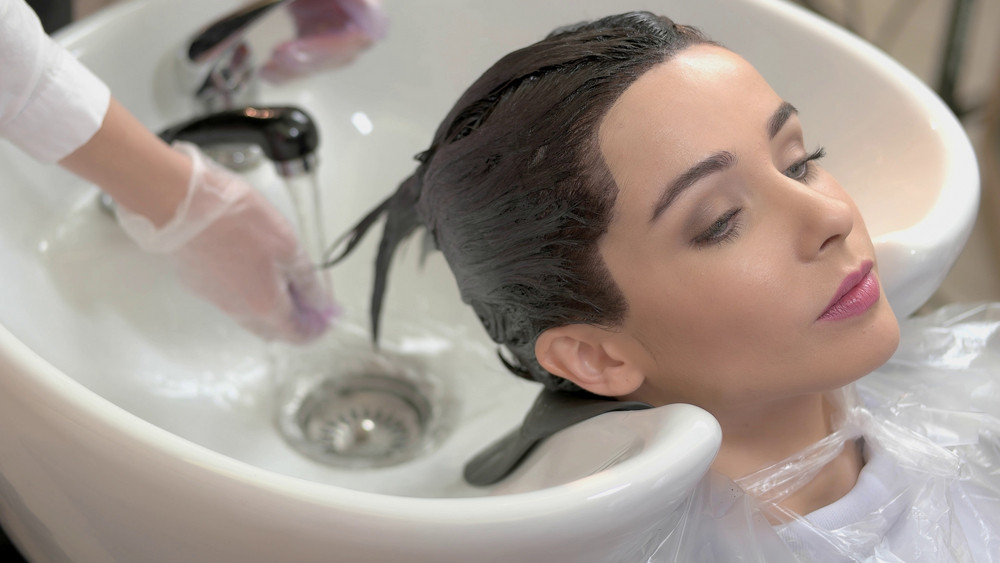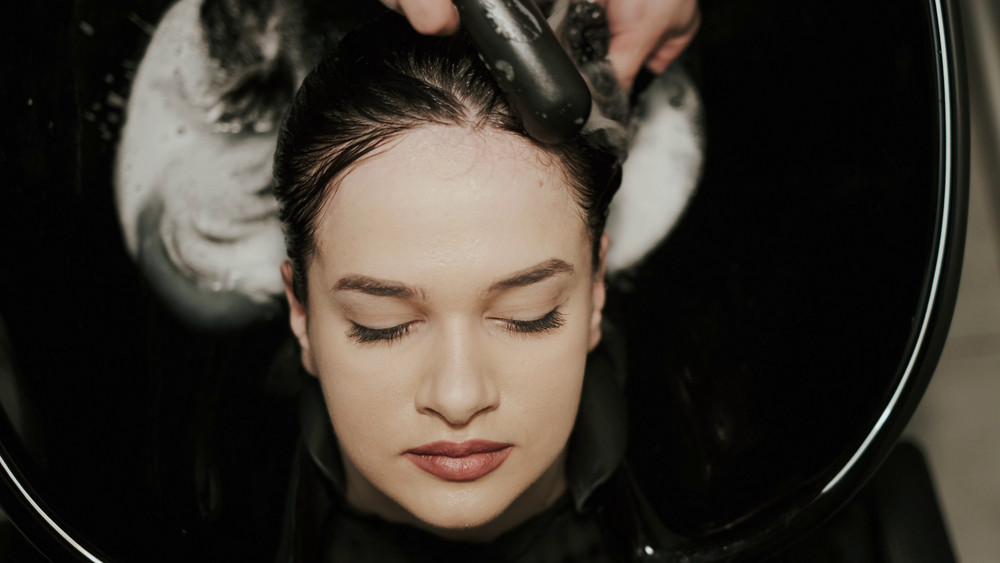Highlights:
- Know Your Extension Types: Choose between clip-ins, sew-ins, tape-ins, and fusion methods based on how long you want them to last, your lifestyle, and hair health.
- Synthetic vs. Human Hair: Synthetic extensions are budget-friendly and low-maintenance, while human hair offers a natural look, styling versatility, and longer durability.
- Find the Right Stylist: Look for licensed professionals with experience and certifications in hair extensions; ask about their training, products, and pricing before booking.
- Importance of Consultation: A personalized consultation helps assess your hair’s condition, sets realistic expectations, and provides care advice tailored to your needs.
- Maintain Proper Care: Use gentle brushing, wash less frequently with sulfate-free products, protect your hair while sleeping, and avoid oil-based products near roots to prolong extension life.
- Regular Professional Aftercare: Schedule routine check-ups for tightening, adjustments, and conditioning treatments to keep both extensions and natural hair healthy and looking great.

Choosing hair extensions feels like a maze with countless options and confusing terms. You want professional hair extensions in New Port Richey that match your style, budget, and hair health. This guide breaks down what you need to know so you can pick the best hair extension services without the guesswork. Keep reading to find practical hair extension tips that make your decision easier. For more information on salon safety, you can visit the OSHA guidelines for hair salons.
Understanding Hair Extension Types
Let’s start by breaking down the main types of hair extensions. Knowing these differences helps you pick the right option for your needs.
Clip-Ins vs. Sew-Ins
Clip-ins and sew-ins offer two very different experiences. Clip-in extensions are great if you want a quick change. You can put them in and take them out at home. They’re perfect for special events or when you want extra volume for a night out.
Sew-ins, on the other hand, are a more permanent solution. A stylist braids your natural hair and sews the extensions into these braids. This method lasts longer, often up to 8 weeks. Sew-ins give you a fuller look that stays put, even when swimming or working out.
But there’s a trade-off. Clip-ins are gentler on your hair but need daily removal. Sew-ins let you wake up ready to go, but they put more stress on your natural hair.
Tape-Ins vs. Fusion
Tape-ins and fusion methods both offer a middle ground between clip-ins and sew-ins. Tape-in extensions use adhesive strips to attach to your hair. They’re quick to apply and remove, usually lasting 4-8 weeks.
Fusion extensions, also called bonded extensions, attach to your hair with a keratin-based adhesive. A stylist uses heat to bond small sections of extensions to your natural hair. This method can last up to 6 months with proper care.
Tape-ins are great if you want something longer-lasting than clip-ins but less permanent than fusion. They’re also easier to remove and reapply. Fusion offers the most natural look and movement, but the application process takes longer and can be more damaging to your hair.
Synthetic vs. Human Hair
The choice between synthetic and human hair extensions impacts both look and cost. Synthetic hair is cheaper and holds its style better, even in humid weather. But it can look less natural and doesn’t blend as well with your own hair.
Human hair extensions cost more but offer big benefits. They look and feel more natural. You can style them just like your own hair – curl, straighten, or color them. They also last longer with proper care.
Think about your budget and how you want to style your hair. If you’re after a specific look that won’t change, synthetic might work. For versatility and a more natural feel, human hair is the way to go.
Finding the Right Stylist
Now that you know about extension types, let’s focus on finding someone to apply them. The right stylist makes all the difference in how your extensions look and last.
Questions to Ask Before Booking
Before you book an appointment, ask the stylist some key questions. Start with their experience. How long have they been working with extensions? What types do they specialize in?
Ask about their training, too. Did they learn through formal classes or on the job? A stylist who keeps up with new techniques will serve you better.
Don’t forget to ask about the products they use. Quality matters when it comes to extensions and the adhesives used to apply them. A good stylist will be happy to share this info.
Lastly, ask about pricing. Get a clear breakdown of costs for the extensions, application, and any follow-up appointments. This helps you budget and avoids surprises later.
Importance of Consultation
A consultation is your chance to get personalized advice. A good stylist will look at your hair type, lifestyle, and goals before recommending extensions.
During the consultation, they should examine your hair’s health. If your hair is too fine or damaged, they might suggest alternatives to extensions. This honesty protects your hair in the long run.
Bring photos of the look you want. The stylist can tell you if it’s achievable and how to get there. They might suggest a different type of extension or a gradual process to reach your goal.
Use this time to ask about care routines, too. A stylist can give you tips on how to keep your extensions looking great between appointments.
Checking Stylist Credentials
Don’t be shy about checking a stylist’s qualifications. In Florida, all hairstylists need a license from the Board of Cosmetology. You can verify a license online through the state’s Department of Business and Professional Regulation.
Look for certifications specific to hair extensions, too. Many brands offer training programs for stylists. These show the stylist has learned proper application techniques for that brand.
Ask to see before-and-after photos of their work. This gives you a real sense of their skill level. If possible, read reviews from other clients or ask for references.
Remember, a skilled stylist will be proud to share their credentials and happy to answer your questions.
Hair Extension Maintenance Tips
Once you have your extensions, proper care keeps them looking great. Follow these tips to extend the life of your new look.
Daily Care Routine
Your daily routine needs to change a bit with extensions. Use a soft-bristle brush to detangle, starting from the ends and working up. This prevents pulling on the attachment points.
Wash your hair less often – 2-3 times a week is usually enough. Use sulfate-free shampoo and conditioner to keep the extensions soft. Always dry the attachment points completely to prevent mold or slipping.
Sleep with your hair in a loose braid or ponytail. This reduces tangling and stress on the extensions. A silk pillowcase can also help reduce friction.
Avoid oil-based products near the roots. These can break down adhesives in tape-ins or cause slipping in other types. Keep styling products to the mid-lengths and ends of your hair.
Professional Aftercare Services
Regular check-ups with your stylist help keep your extensions in top shape. They can tighten or adjust extensions that have loosened over time.
For some types, like tape-ins, you’ll need professional help to move them up as your hair grows. This usually happens every 6-8 weeks.
Your stylist can also deep condition the extensions to keep them soft and shiny. They might offer treatments to strengthen your natural hair, too, which is important for long-term extension wear.
Don’t skip these appointments. They’re key to maintaining the health of both your extensions and natural hair.
Source: FDA
In conclusion, choosing the best hair extensions in New Port Richey comes down to understanding the different types, knowing what fits your lifestyle and budget, and finding a skilled stylist who prioritizes your hair health. With the right knowledge and professional guidance, you can enjoy beautiful, natural-looking extensions that boost your confidence while keeping your hair strong and healthy. Remember, proper maintenance and regular check-ins with your stylist are essential to keep your extensions looking their best long-term. Take your time, ask questions, and make informed choices for a stunning new look you’ll love.





